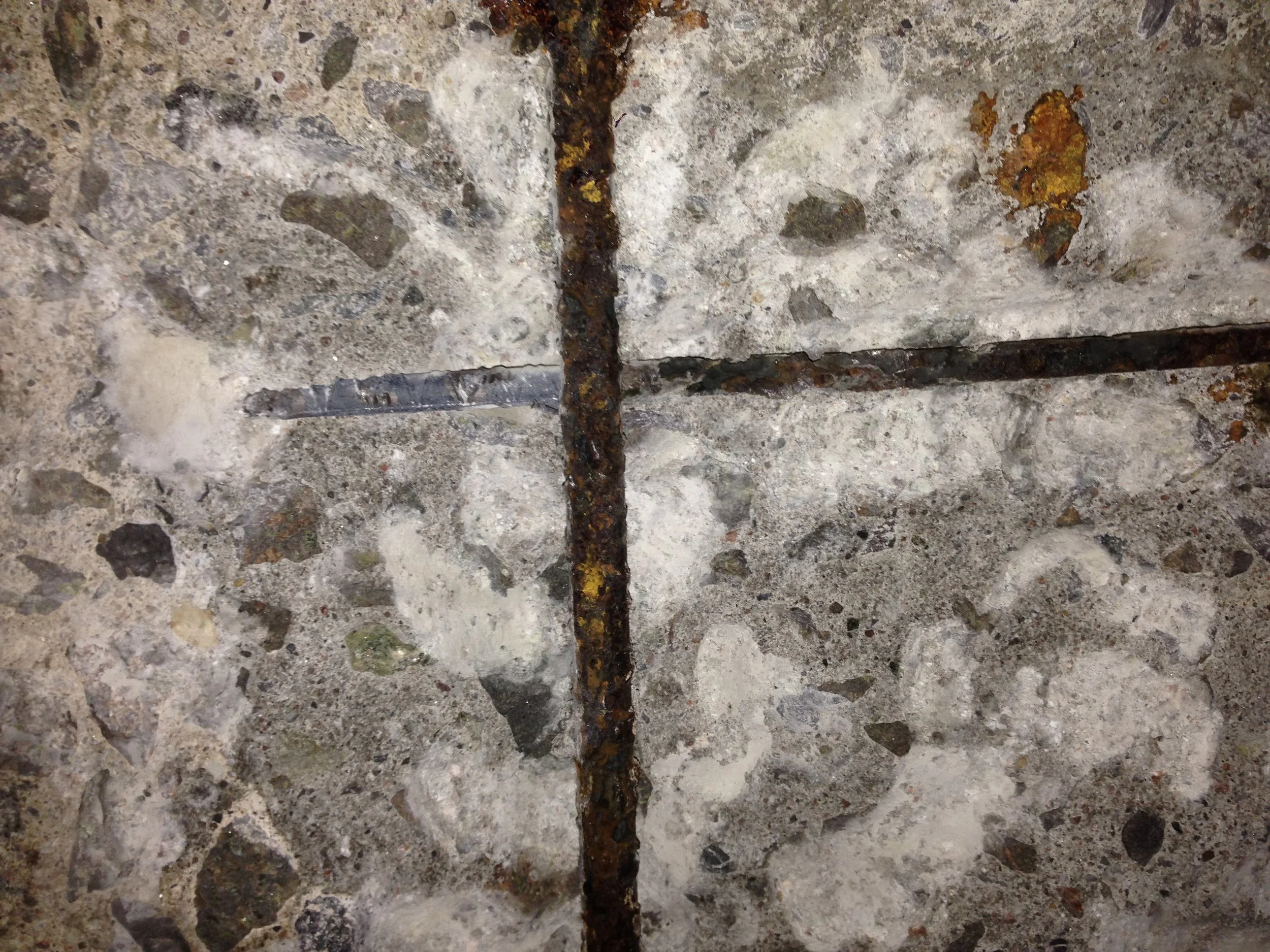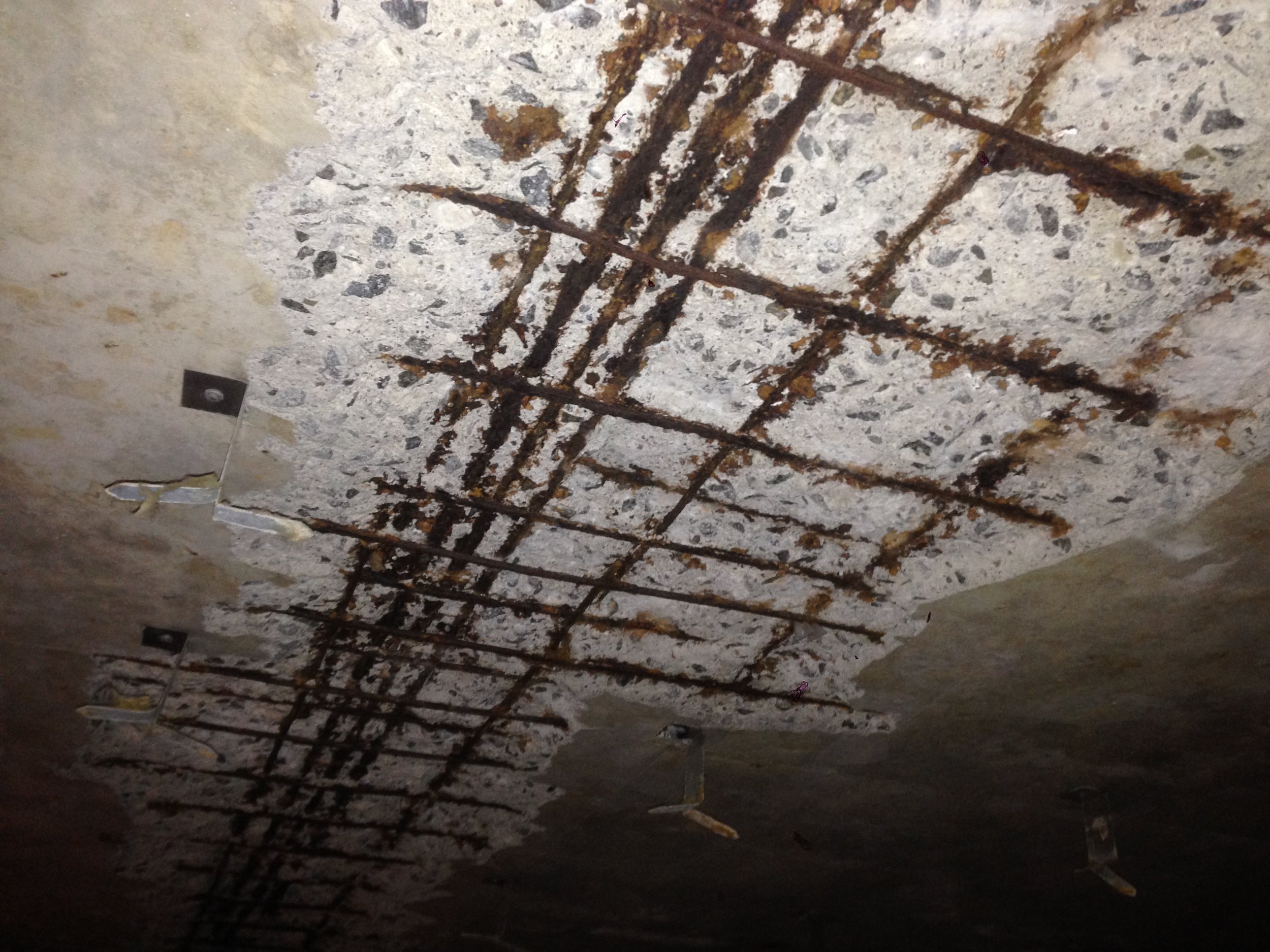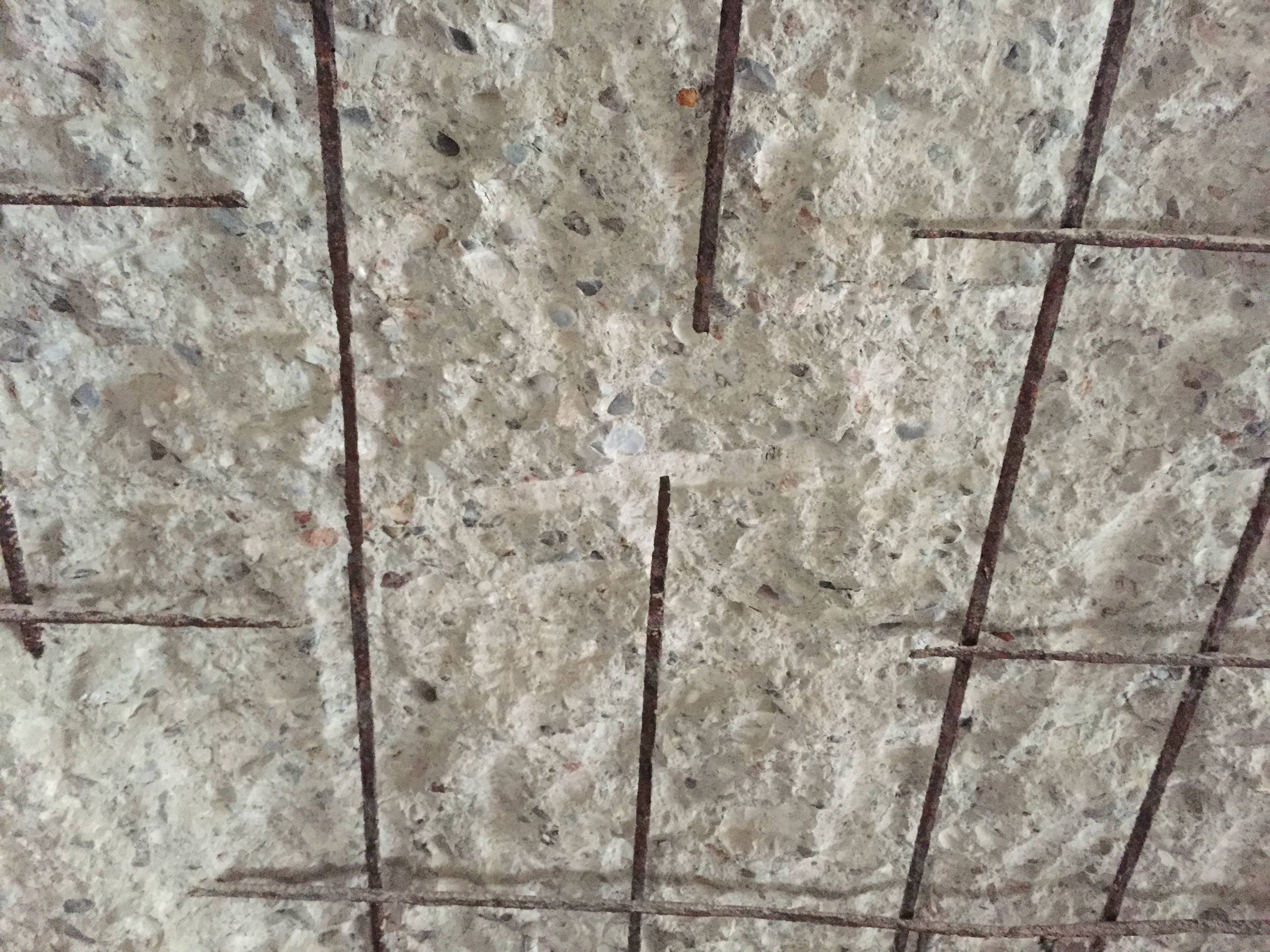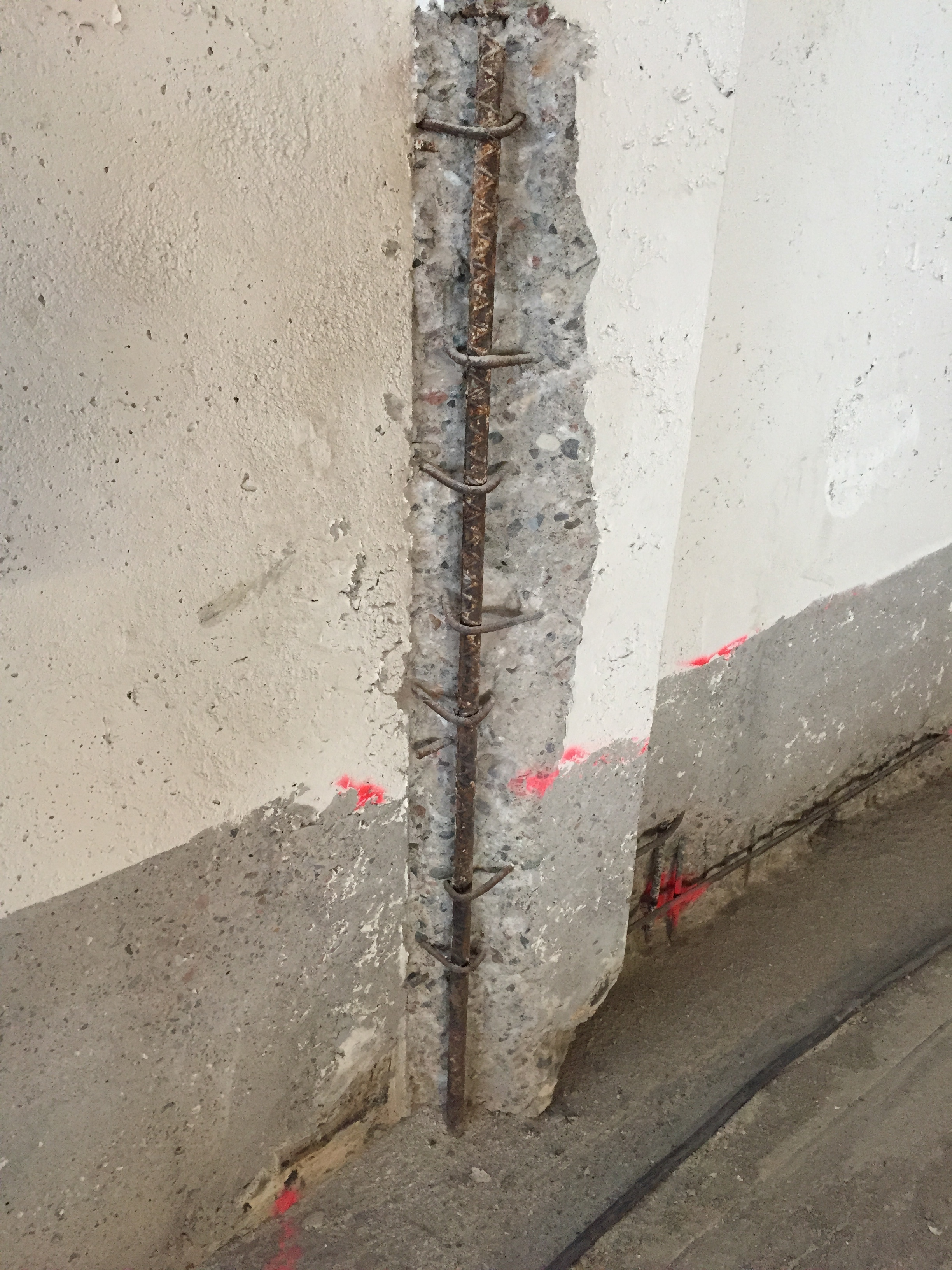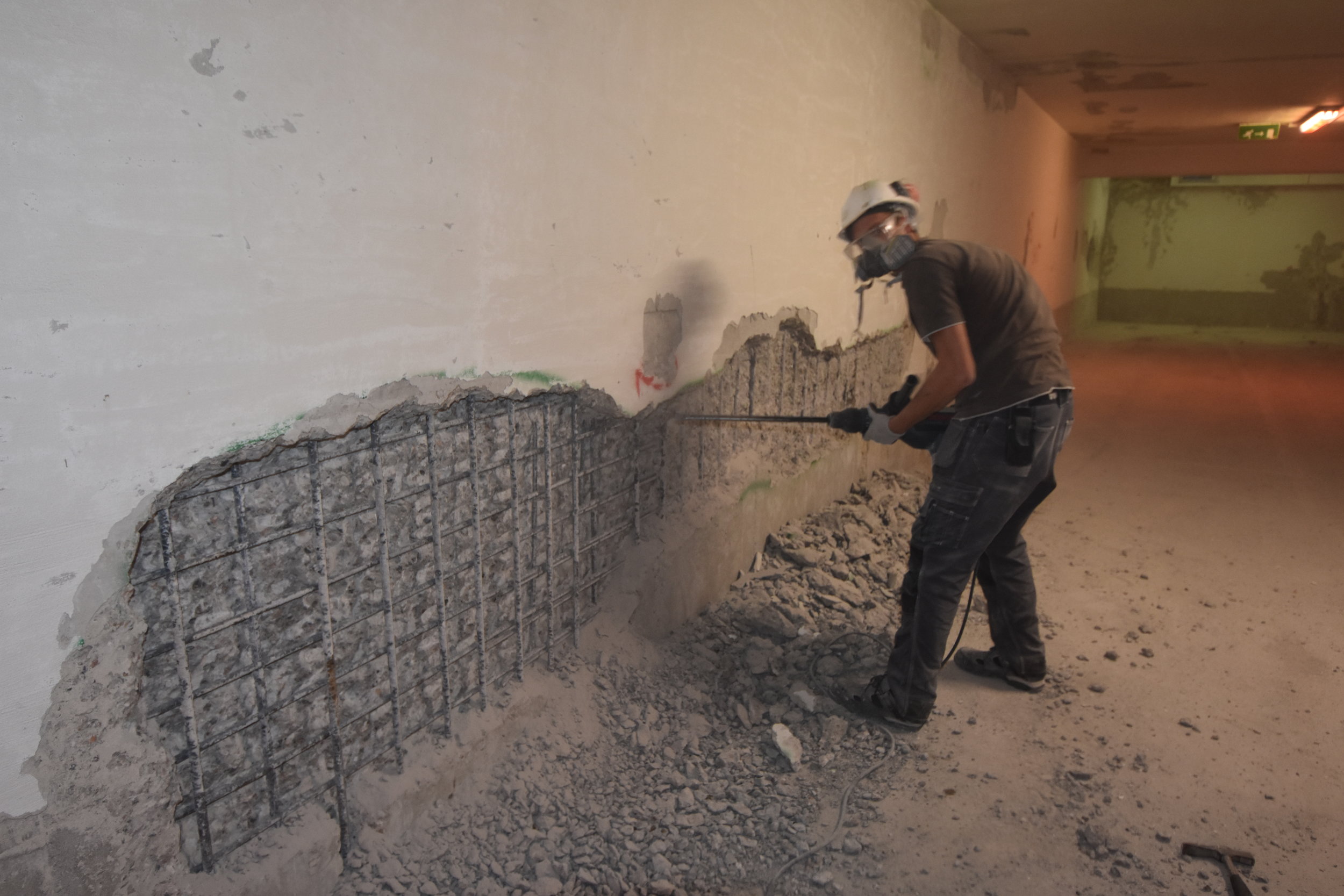Corrosion process
We all know that steel will corrode naturally. Why? This goes back to the fundamental law of nature that all matter has a tendency to exist in the lowest energy state. When the iron ore is mined out of the ground, the ore is in its lowest energy state as it has existed for thousands of years in the ground. We process the ore and turn it into iron and steel so we can make useful structures such as steel bridges, buildings, reinforced concrete etc.
This process of turning iron ore into steel requires energy - a lot of it! The energy is trapped inside the steel and as a result; steel is at a higher energy state than the ore.
energy + Iron ore → Iron...(1)
Iron + alloy → steel ...(2)
Equation (1) is describing the process of adding energy (i.e. processing) to iron ore resulting in metallic iron and Equation (2) is further processing the metallic iron by alloying and converting it into steel.
Without intervention iron and steel would want to release the trapped energy and revert back to the ore state. This process is called “corrosion”, commonly known as rusting. The chemical equation of the corrosion process is:
4 Fe + 3 O2 → 2 Fe2O3 ...(3)
Iron + oxygen (air) → Rust
Equation (3) describes 4 atoms of iron (Fe) combining with 3 molecules of oxygen (O2) in the air to form 2 molecules of iron oxide (Fe2O3), a component of rust.
Rust has a larger volume than steel so when the corrosion of the steel reinforcing bars in concrete occurs the rust will exert internal pressure. The result is concrete spalling which is cracks and broken concrete.
Why balconies and other reinforced concrete structures deteriorate:
When steel is covered in dry concrete it is usually not subject to corrosion because the alkaline properties of lime in the cement maintain the reinforcing materials in a passive condition. However, when the concrete becomes contaminated with chloride salts the passive steel film is disrupted resulting in the formation of corrosion cells on the rebar surfaces.
Once started, the corrosion activity progresses at a rate influenced by the degree of moisture and oxygen availability. The strong steel becomes a weak powder (rust) which can occupy up to four times more space, building up pressure inside the concrete as high as 4700 psi and eventually splitting the concrete apart.
As the concrete cracks, direct channels from the surface to the steel reinforcement are opened up and new waves of chloride contaminated and oxygen saturated water gain direct access to the steel, continually compounding the problem. The more the steel corrodes the further it pushes the concrete apart, exposing itself to even more corrosion.
How to stop corrosion:
While corrosion caused by chloride contamination in existing structures cannot be reversed, it can be addressed by stopping the electrochemical activity that causes it. Only one method has been found to accomplish this… cathodic protection!
Cathodic protection is an electrical means of countering corrosive action without any adverse effect on either the concrete or the steel. In effect, it employs the same elements responsible for the corrosion in the first place to set up a corresponding reverse current that causes the chloride ions to migrate away from the steel, restoring the steel to an immune state. The damaging electrochemical action is effectively neutralized and corrosion is addressed.
Cathodic protection is a well-accepted and a proven technology that has been used in all types of steel structures for the past century. In fact the US Federal Highway Administration has officially stated; “The only rehabilitation technique that has been proven to stop corrosion in salt-contaminated bridge decks, regardless of the chloride content of the concrete, is cathodic protection.”
Cathodic protection can be applied to entire structures or to particularly corroded areas as identified by the corrosion survey. Cathodic protection is the lowest cost permanent solution to rebar corrosion problems.
Con-Rehab has developed its own team of experienced specialists in rebar cathodic protection techniques, along with custom-designed instruments and control units in order to provide the best professional service in the industry.

